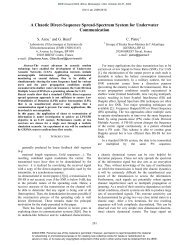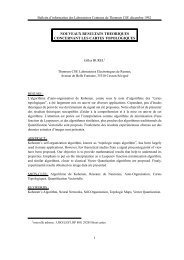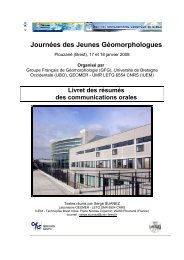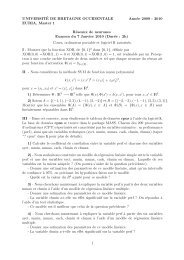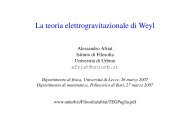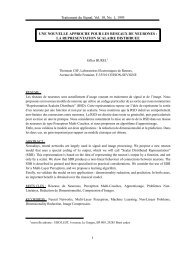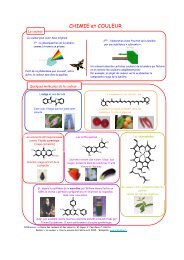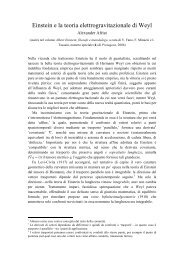Abstract 1 Introduction
Abstract 1 Introduction
Abstract 1 Introduction
Create successful ePaper yourself
Turn your PDF publications into a flip-book with our unique Google optimized e-Paper software.
Battleeld Atmospherics Conference (BAC’93), Nov 30 - Dec 2, 1993, Las Cruces, New Mexico, USA<br />
The including frame provided by a detector is approximate, hence there may be slight<br />
variations of the apparent size of the vehicle.<br />
These variabilities are taken into account by creating a large training base, containing<br />
various vehicles in many orientations, with many backgrounds and environmental conditions.<br />
Furthermore, to take into account the fact that the including frame is approximate,<br />
slight homotheties are performed on the examples of this data base.<br />
The image to classify is normalized in mean and variance, in order to obtain some<br />
insensibility with respect to camera gain. Then it is normalized in size, because the input<br />
size of a neural network is xed. For our experiments, this size was 24x16pixels.<br />
Six classes of vehicles have been dened: helicopter, truck, and four classes of tanks.<br />
A data base of 945 images of vehicles has been created to train the neural network. A<br />
second data base of 1407 images of vehicles has been created to test the generalization<br />
capabilities of the neural network (these images are not used for training).<br />
Two kinds of neural networks have been compared:<br />
A 3-layer perceptron (384 + 15 + 6 neurons), trained by the backpropagation algorithm<br />
A LVQ network (384 inputs, 32 neurons). The LVQ1 method for ne tuning has been<br />
used.<br />
The obtained generalization rate is:<br />
92% with the 3-layer perceptron<br />
89% with the LVQ network<br />
The required training time (on a Sun workstation) is 10 hours for the 3-layer<br />
perceptron and 30mn for the LVQ network. Classication of a normalized image requires<br />
385x15+16x6 = 5871 multiplications with the 3-layer perceptron, and 384x32 = 12288<br />
multiplications with the LVQ network.<br />
The conclusion is that the performances of these neural networks are quite similar<br />
(92% and 89%), but the MLP is twice faster at recognition. However, since the training<br />
time required by the LVQ network is 20 times lower than the training time required by the<br />
MLP, the LVQ network should be used preferently if one wants to compare quickly the<br />
interest of new training bases.<br />
9



